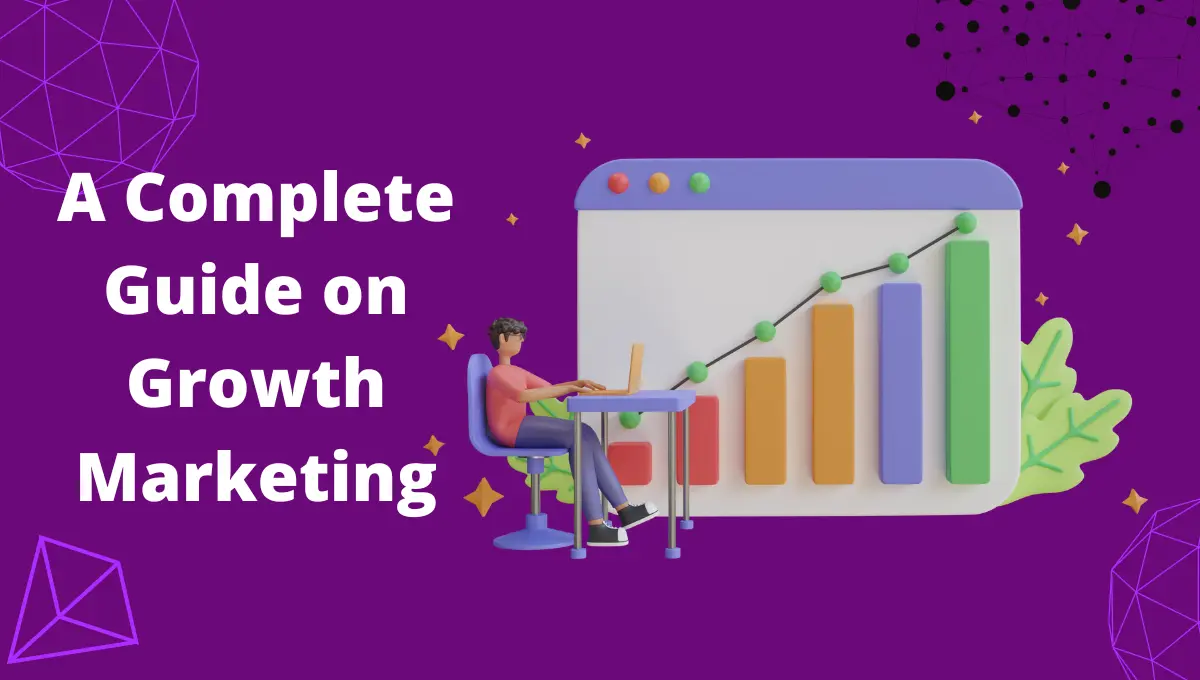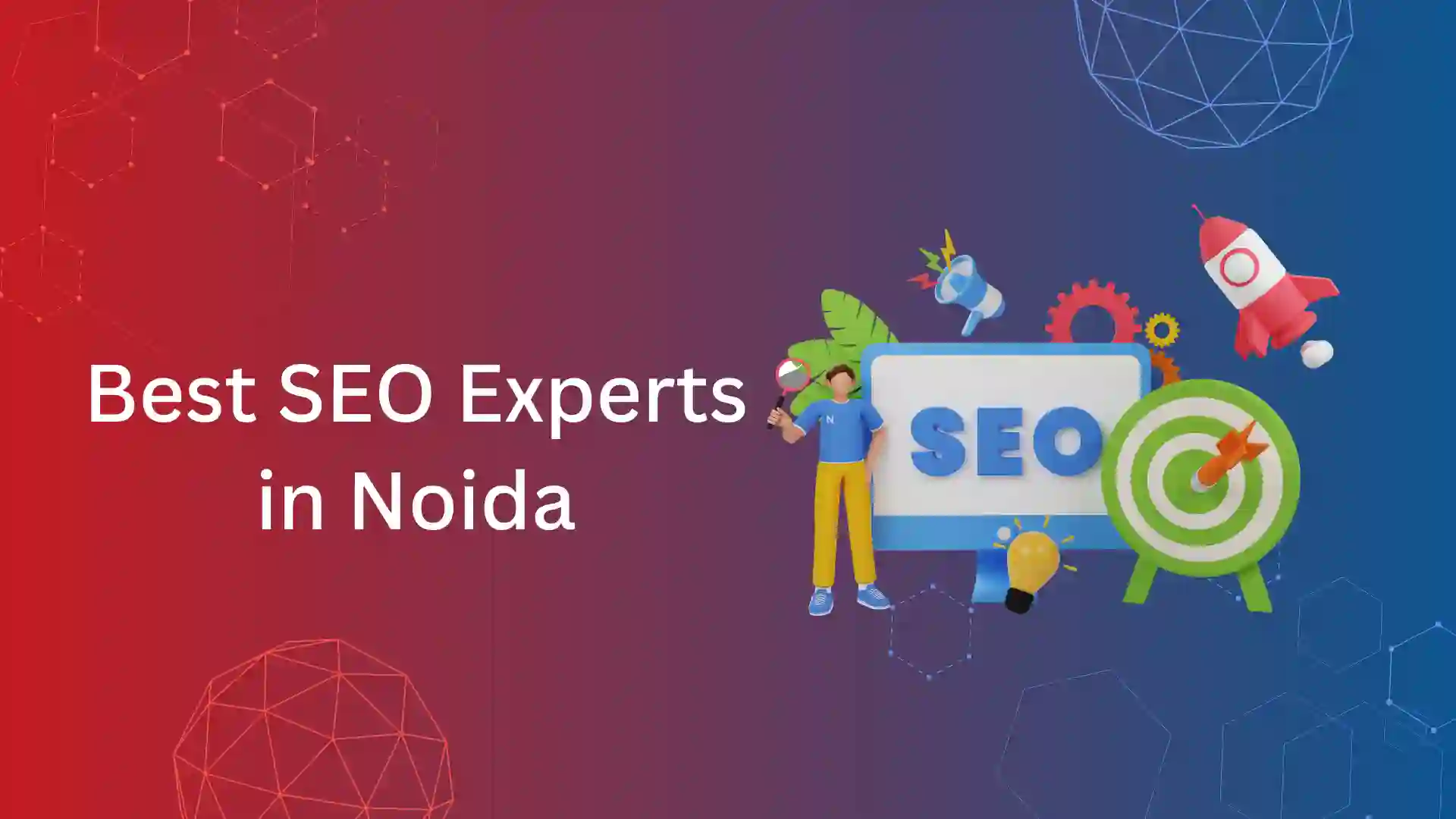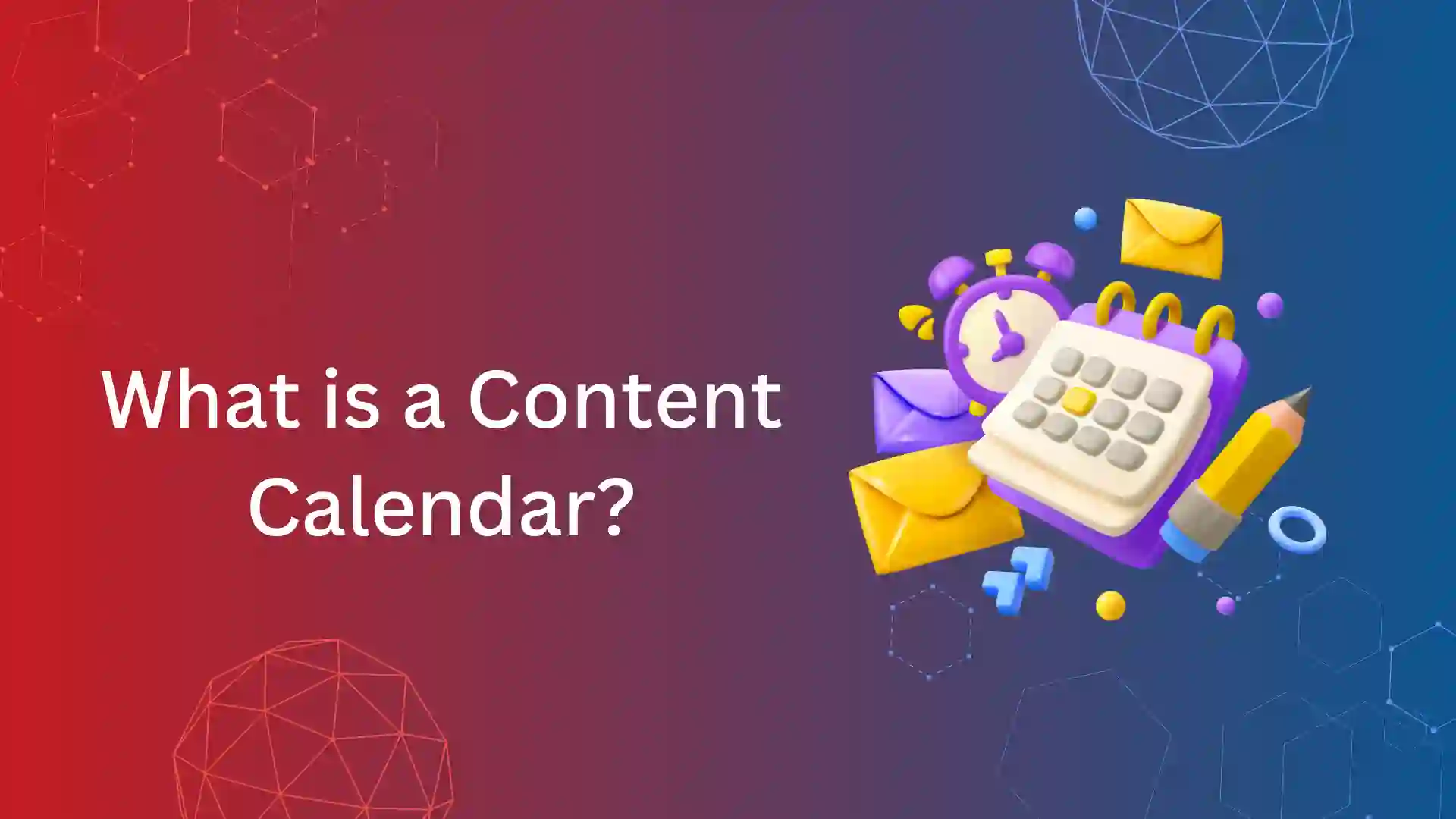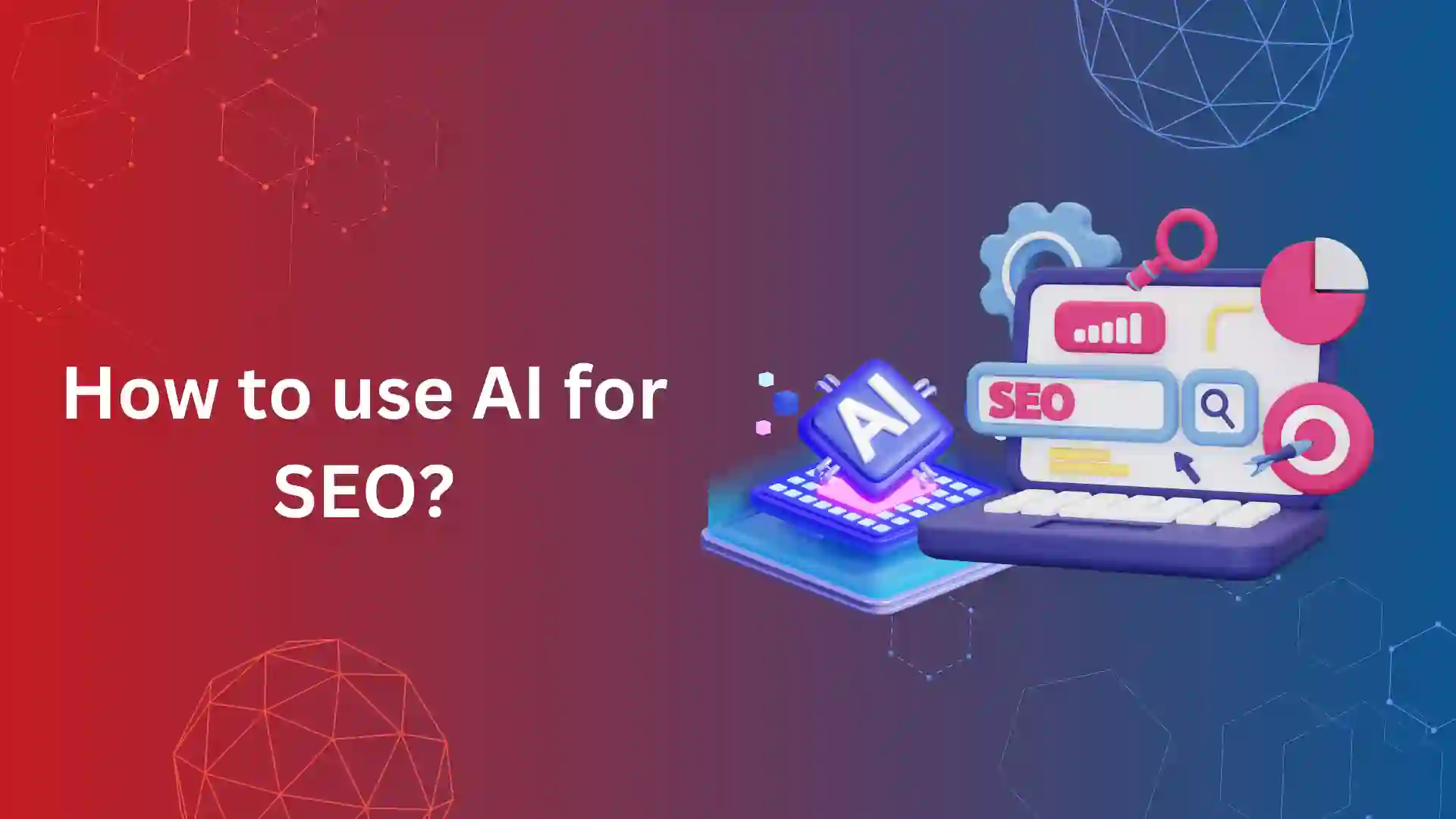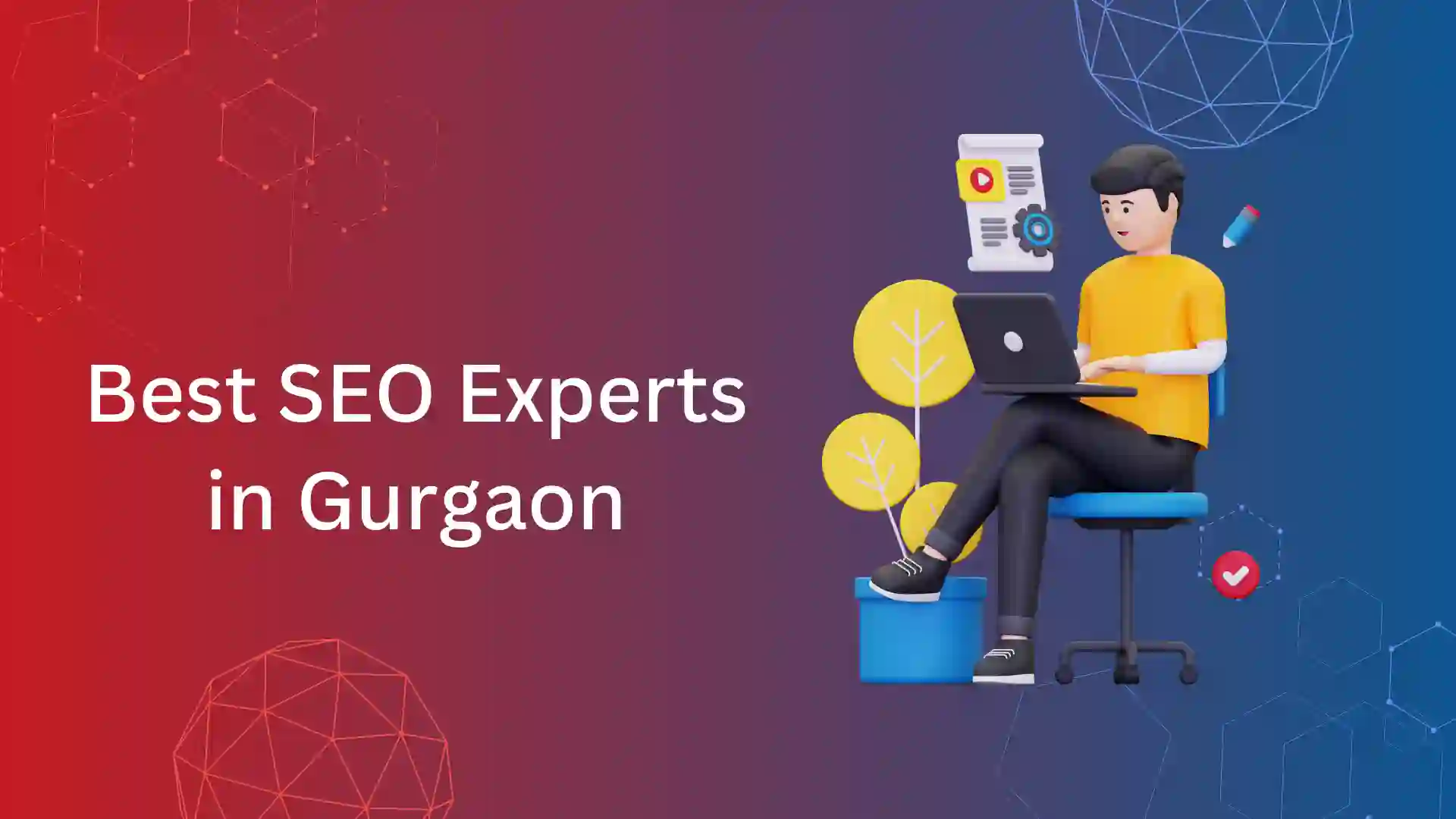The total expenditure for advertising in the United States in 2022 is around 394 billion dollars.
In an environment where new businesses emerge frequently, it can be hard for one business to stand out. They need creative, data-driven marketing strategies to attract and retain customers.
“Growth Marketing” is a term that has been rapidly spreading over the past decade. It is a marketing strategy that many businesses adopt to get a long-term loyal, advocate customer base for their products and services.
So, what is growth marketing? How is it different from traditional marketing, and how does it help grow business? This article gives a detailed explanation of everything about Growth Marketing.
What Is Growth Marketing?
Growth marketing is a strategy that focuses completely on the growth of a business. It is a data-driven, rapid-experimentation process that aims for full funnel growth, i.e., right from the awareness stage to the referral stage of the funnel.
Consistent experimentation is one of the core principles of such marketing. A growth marketer (hacker) frequently experiments with different goals and implements the one that works best for their business.
The success of a growth marketer depends upon the mindset they have. A growth marketer should be able to
- think out of the box,
- be data-driven,
- experiment and execute different ideas,
- get their hands dirty, and
- be able to accept failure.
Growth Marketing vs. Traditional Marketing vs. Digital Marketing
Traditional marketing focuses on brand awareness through print media, radio, commercial papers, and television. The only aim of this marketing channel is to reach the maximum number of people in the same demography.
Traditional way of marketing doesn’t have any in-built analytical system to understand the reach of the campaign, leads, and sales converted from the ads. They have to rely on some third-party market research companies, and their data is the only source.
Digital marketing on advance to traditional marketing focuses on the top two stages of the funnel, Awareness and Acquisition, growth marketing focuses on the marketing funnel as a whole (Pirate funnel).
The digital way of promotion involves creating campaigns that get a customer on their landing page, website, or to get customer contact details. Their main role is to drive traffic, generate leads, and nurture sales.
Digital marketers usually work within the stipulated budget and use tools like Google Adwords, ad copies, or e-mails to create awareness and generate leads. But this is where a digital marketer’s job ends.
On the other hand, a growth marketer focuses on acquiring, engaging, retaining, and making sure customer becomes advocates. They manage the full funnel growth.
A growth marketer ensures that the customer not only visits the landing page but also takes a particular action, like making a purchase or learning about the product.
They work on retaining customers by making them buy their products for years and refer the products within their circle. A growth marketer goes through every purchasing cycle of the customer.
To achieve this, a growth marketer uses metrics like A/B testing to experiment with different ideas and determine which works and which does not among a user segment.
These results help create highly optimized and personalized strategies to target the specific user segment. Even though, growth marketing focuses on performance, it differs from performance marketing.
Why Is Growth Marketing Important?
Growth Marketing has become the buzzword today and it is the future for any company that focuses on growth.
Top brands globally have adopted growth marketing and seen huge growth in terms of revenue as well as market share.
Here are some reasons why growth marketing has been on the rise in recent decades.
1. Automated:
Unlike traditional marketing methods, where each task has to be completed manually, growth marketing is completely automated, where tools are used to complete tasks and get amplified results.
2. Data-driven:
With growth marketing, marketers don’t need to rely on their gut feeling to know what works.
They can adopt a clear and data-driven growth marketing strategy to create campaigns that give the desired results.
3. Super-fast:
Growth marketing helps businesses save time by speeding up the marketing process and allows them to focus on areas that need attention.
4. Cost-efficient:
Growth marketing utilizes the latest and highly advanced growth marketing tools and strategies.
Growth marketers can save a lot of money by doing small experiments and finding which works best for their business.
They don’t have to spend thousands on one strategy and wait for the miracle to happen.
Full Growth Marketer Funnel
A growth funnel (also Pirate Funnel) is one of the most fundamental aspects of growth marketing. A pirate funnel is used to measure how a customer travels through every stage of their buyer’s journey.
A pirate funnel can be used to break down each step of a buyer’s journey and shows the weakest point a company should focus on. It helps you find the bottleneck which stops you from gaining more customers.
The concept of the pirate funnel was first developed by Dave McClure and named thus because the first letter of the stages spells out AAARRR. The stages of the pirate funnel are
- Awareness,
- Acquisition,
- Activation,
- Retention,
- Revenue,
- Referral.
Awareness
Creating brand awareness by making buyers visit the website is the first and most important stage in the growth funnel.
Brand awareness can be done through social media ads, paid campaigns, SEO-optimized content, and offline media platforms like newspapers, posters, etc.
The primary goal of awareness is to make people aware of the brand and what they do. It is a tactic used by businesses to bring new customers to their landing pages.
It can be measured using metrics like social media impressions, google views, website visits, and google searches of the brand.
Acquisition
Acquisition is when a customer takes an action on a website or ads through sign-ups or submitting their contact details or adding a product to the cart.
This is the stage where businesses can gather user/customer personas— names, email ids, locations, mobile numbers, etc., to update or engage them with more information like newsletters and promos.
The customer persona created through this process allows businesses to know how they should move forward with their target audience.
For example, ad campaigns can be created according to the customer persona— sometimes, lookalike audience mapping.
This stage can be measured by tracking social media leads, e-mail subscriptions, add to cart details, lead magnet submissions, etc.
Activation
Activation is when a customer purchases or uses a product or service offered by the brands. This stage is the first touchpoint of the customer’s experience with the brand.
This is the stage where people discover the value and use of the product. It is where the “WOW” moment happens, so brands need to make a good first impression on the customers.
If a brand has gotten many customers to sign up or download their products and the customer’s first experience with the product is not up to par, it means the activation stage has failed.
Failing in the activation stage can disrupt the further funnel stages, like retention, revenue, and referral. It can also lead to the end of the customer’s journey with the brand.
Revenue
Revenue is when the customer starts paying for the service or product the business offers. The retention and revenue cycle can swap each other according to the need of the business.
For example, suppose a business sells skincare products. In that case, the customer first buys the product (revenue) and then decides whether to continue buying it based on the value of the product (retention).
If it is a Freemium product like Netflix, revenue will happen when the customer upgrades the service to become a paid subscriber.
The revenue of a business can be described as the remaining amount after the Customer Acquisition Cost (CAC).
The CAC can be compared with the brand’s Lifetime Value (LTV) to determine how to build revenue. The ideal CAC to LTV ratio should be around 1:3.
Retention
Retention is one of the major metrics that companies focus on for long-term cash flow. The amount of spend in this stage compared to awareness comes down by 5 times.
Acquiring a new customer is an expensive and elaborate process. A brand has to start afresh from the awareness stage and make the customer like its product. Comparatively, retaining an existing customer is inexpensive and less tiresome.
Some of the best ways to retain customers are by sending them recurrent emails/SMS about a new product or service and important events and offering time-restricted sales or features (offers, discounts, season sales, etc.). Social media updates and advertisements are also ways to retain customers.
When a customer has good experience with your brand, they are likely to try your new launches. But, it’s you who should reach them via various marketing channels.
Referral
The referral stage is when existing customers like your product, refer it to others, and bring new customers to your platform. It is one of the most effective and less expensive ways to advertise your products.
So, how can a brand turn its customers into its advocates? There is no perfect answer to it. The first and foremost thing is to provide the customers with a satisfactory and valuable service.
Brands can also think of ways to incentivize their customers to advocate for their products. Referral is another way for businesses to know if the customers truly like their products and services.
Difference between digital marketing and growth marketing in accordance to pirate funnel
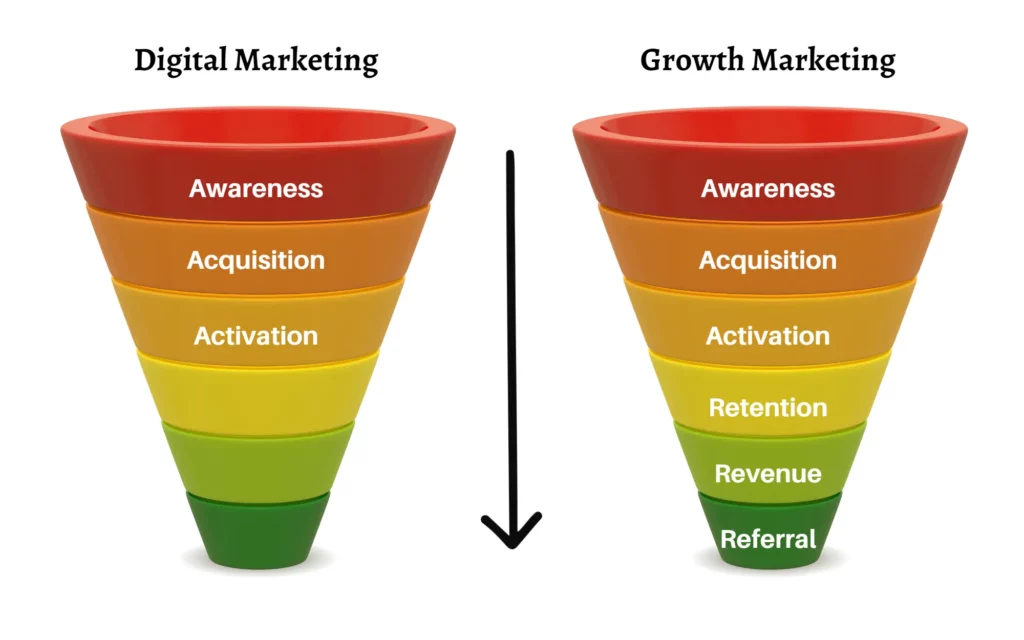
Core Components of Growth Marketing
A/B Testing
A/B Testing, also called split testing or multivariate testing, is a process where two or more versions of the same thing (e.g., a landing page) is tested to determine which works better.
Once the variation that has a better chance of gaining, engaging, and retaining customers is identified, it can be used for future campaigns.
Understanding North Star Metrics (NSM)
The North Star Metric (NSM) reflects the core values of that a company aim to achieve for respective brand or product.
NSM helps brands go beyond working for surface-level growth and instead aim for long-term growth. To measure the NSM of a business, one should first understand the value their products add to the customers.
Take UBER, for example. The NSM of USER is the number of bookings in a week/month. Likewise, for Facebook, it’s the number of active users in a week/month.
One Metric That Matters (OMTM)
One Metric That Matters (OMTM) is the key metric that a business focuses on at a given time to grow its business.
It provides a single goal that a growth marketer or a team should focus on to grow the business.
Having an OMTM doesn’t mean that other metrics are unnecessary. There are different metrics that are used at different points of a customer’s journey.
OMTM helps businesses focus on the one metric that a business should focus on at a particular stage of the customer’s journey.
Understanding User Persona
Understanding who the users are is important for any brand to frame a marketing strategy more smartly and effectively. Growth marketers should know
- who their users are,
- what they do,
- user behavior, and
- user persona.
The buyer persona is the first step a business goes through to understand its customers.
A buyer persona is a fictional description of a person representing their target audience. It is based on detailed research on existing and potential customers.
When understanding a customer, just user persona is not enough. Understanding the “needs” of the customer is also important.
For example, when customers buy a product, they buy it because they need something from it. Understanding their needs can enable a business to market its products better.
The Job to be Done Framework (JTBD)
The Job To Be Done Framework (JTBD) captures the needs and goals of a persona for buying a specific product. “What do they need?” “What are they looking for?” The JTBD framework looks into these kinds of questions.
To understand the JTBD framework, one should first understand why a customer buys a product. With this data, a business can
- identify what the customer needs from the product,
- identify if any of the customer’s needs are unmet, and
- predict which new ideas or concepts will win the customers.
The “job” can be defined as the customer’s needs or goals for buying a product. So, the customer buys the product to get the job done.
Decoding Competitor Efforts
Understanding the competitors better than they understand themselves is one of the crucial factors to succeed in any business.
Any business should do a competitor analysis on similar businesses that have established themselves on the market as leaders and understand what they do right or wrong and their marketing strategy.
So, who is a competitor? How does someone define a competitor? A competitor is a brand or company that has the same value proposition and caters to the same audience as the business.
How to Know Your Competitors
There are some methods a business can use to find who their competitors are in the market.
Google is an effective tool to search for competitors who rank higher and have a better reach than the brand. As long as a brand knows its value proposition and searches with the right intent keyword, it can easily find its competitors using Google. For big businesses or brands, tools like Owler can help them know who their competitors are and get insights on information like the founder, revenue, and ranking.
Similar Web is another tool that slightly smaller brands can use for competitor analysis. But there is a catch; it only works for brands with a minimum of 10k views per month.
Businesses can use OPN (Other People Network) to find where their audience usually hangs about. For example, brands can use Facebook groups to identify their potential customers and competitors. They can also look for competitors in the “Pages people also viewed” section on LinkedIn.
Analyze what your Competitors do
Once a business has identified its competitors, the next step would be to analyze and understand what they do to attract customers. Below are some aspects that can be analyzed to understand what the competitors do.
- Where is their audience or traffic coming from?
- What kind of keywords are ranking?
- What kind of ads/emailers are they running?
- Are they making any pricing changes?
Knowing all this information can help businesses stay on top and ensure that what they offer their customers is always better than their competitors.
Some tools that can be used to analyze competitors are
- SimilarWeb,
- Sparktoro,
- Semrush, and
- Ahrefs.
Tools to Decode Competitor Complete Ads Performance
Facebook Ads Library
Facebook Ads Library shows all the ads run by any business or page across Meta products. Businesses can use this tool to get information about ads run by their competitors.
It gives clear info on the ads run by sorting them based on the location (country), date of launch, and the Meta platform it was run on.
Moat
This platform gives information on the ads run by competitors across all platforms, including banner ads.
Adbeat
This tool segregates each ad into standard ads, native ads, video ads, and landing pages. This is a much better tool that gives info on how long the ads have been running and how they are doing.
Keep an E-mail Alert of your competitor
Owletter
Track all the emails your competitors send in one bird-eye view. Owletter gives the user an email id that the user can enter in the lead magnets of their competitors to track the emails sent by them through Owletter.
Businesses can set e-mail alerts on Owletter to alert them when their competitor sends an email to their audience. This can help businesses stay tuned with their competitors’ moves and adapt to the situations faster.
Keep track on competitor “mentions” on media
Google Alerts
People only get mentioned in media when they become famous for doing something right or wrong. These mentions can positively or negatively impact their sales.
Google Alerts alert businesses when their competitors get mentioned in Google news and let businesses know of their competitor’s movements.
Competitor Landing Page Monitoring
Versionista
This tool helps businesses track changes in the competitor’s landing pages. Versionista is a paid tool, and users can sign up for a free trial. This tool tracks and notes down any changes that the competitor has made to their website.
This website checks the competitor’s website a number of times based on the payment plan selected.
Types of Growth Marketing Campaigns
Acquisition-focused campaigns
This type of growth marketing campaigns focuses on acquiring customers using a variety of marketing channels like paid advertising, SEO (Search Engine Optimization), email marketing, and social media.
They aim to reach and bring new customers to their business. They focus on customers who already know about the product but are still considering their options.
Here are some examples of running acquisition-focused growth marketing campaigns.
- Creating an SEO-optimized advertising campaign that ranks higher and attracts more customers to the website.
- Running a paid Twitter campaign solely focused on users who have visited similar websites.
Engagement-focused campaigns
This type of growth marketing campaigns is all about engaging and retaining existing customers.
It is easy to retain a customer than bring in a new customer. So, engagement-focused growth marketers use email campaigns, push notifications, and customer service to engage existing customers.
Some examples of running engagement-focused growth marketing campaigns are given below.
- Setting up automated email campaigns that send coupons to customers who haven’t used their products for a while.
- Greeting pop-up messages offering offers and discounts to first-time users of their websites.
Revenue-focused campaigns
This type of growth marketing campaigns aims to increase the total amount of money customers spend on a business. This can be achieved through upselling, cross-selling, and even discount codes.
Here are some examples of running a revenue-focused growth marketing campaign.
- Creating an upsell offer for customers who intend to buy a product from their cart.
- Sending discount codes to customers who haven’t bought any products for some time.
How to Develop a Successful Growth Marketing Campaign?
Data-Driven
Growth marketers should be data-driven when it comes to creating a successful growth marketing campaign.
They need to use all the data collected from previous experiments or competitor analyses and combine them to create new, effective growth marketing strategies.
Some data that can be tracked and collected are acquisition-related data, engagement rates, and conversion rates.
Growth marketers can maintain a growth plan (in a Google Sheet) where they can update necessary information like their hypotheses, goals, marketing channels, target audience, budget, etc.
Multi-channel Marketing
Growth marketers should have hands-on experience in multi-channel marketing.
It involves using several online and offline media channels to spread marketing messages and reach more customers.
It includes multiple channels like social media, emails, mobile ads, print das, display ads, TV ads, and more.
Through multi-channel marketing, growth marketers can interact with their customers across various platforms and create a more comprehensive marketing campaign.
Creative – Thinking out of the box
Growth marketers should be creative in their approach. They should think out of the box and do things that no one has done before.
Unlike traditional marketing, which follows already experimented and established methods, growth marketers should develop new ideas to experiment and find the one that works best for the customers.
Art of Copywriting
Copywriting is an essential skill for marketers, be they growth marketers or digital marketers. A copy is something that is needed to attract customers at every stage of the pirate funnel.
It is needed during the awareness stage, where a catchy copy is needed to attract the attention of the customers.
Also, during the final stages of retention and revenue, copywriting is what makes the customers come back and buy the product.
Complete Understanding of the product
It is not possible to sell a product that you don’t understand. Growth marketers need to have a complete understanding of the product before they start creating a marketing strategy for it.
To make a customer buy a product or service, one should first make the customer understand why they should buy the product. A thorough understanding of the product is required to do so.
Deploying Growth Hacks
Growth hacking is basically “small budget, small amount of time, but big growth.” Growth hacking involves using and testing new opportunities and seeing which works.
Growth hacking techniques can benefit businesses since they allow for:
- more flexibility,
- rapid-experimentation and discovery of new business ideas and models,
- building brand identity and reputation,
- scalable marketing strategies,
- cost-effective and improved ROI, and
- implementing data-driven strategies.
Utilizing growth hacking to its full extent can help create effective growth marketing strategies that can give long-term and sustainable results. In fact, growth marketing is different from growth hacking.
Gut to Fail and Experiment more
Rapid experimentation is one of the core principles of growth marketing. To succeed in growth marketing, one should be unafraid to face failures.
A single successful growth marketing strategy comes from experimenting and failing with tens of previous strategies. Growth marketers should use the data collected through various tools as a base for their experiments.
Storytelling via Social Media
Creating a compelling story that resonates with potential customers can attract more customers than any marketing strategy can.
Storytelling helps businesses emotionally and personally connect with their customers. Social media storytelling involves the use of social media channels like LinkedIn, Instagram, Facebook, Twitter, TikTok, etc.
Storytelling is what captivates the audience and gives voice to a brand or business. Growth marketers can use these social media channels to share their narratives with their customers.
Closely working on Customer Feedback
Customer feedback is a valuable resource that can help businesses understand what their customers need and what they think about the products or services.
It is important for growth marketing because it allows growth marketers to make informed decisions that will drive growth for their business.
Additionally, showing customers that their feedback holds value to the business can foster a sense of loyalty and engagement with the business.
Accelerate your company’s growth with effective growth marketing strategies
Conclusion
Growth marketing has been on the rise in recent years, and there are many businesses that have started to adopt growth marketing strategies to grow their business.
The most important factor in growth marketing is to engage with customers at every stage of the funnel and use data-driven marketing strategies to create the best marketing campaigns for existing and potential customers.
We are one of the leading growth marketing agency that not only focus on conversion. Our marketing strategies is to build high retained customer and purchases.

